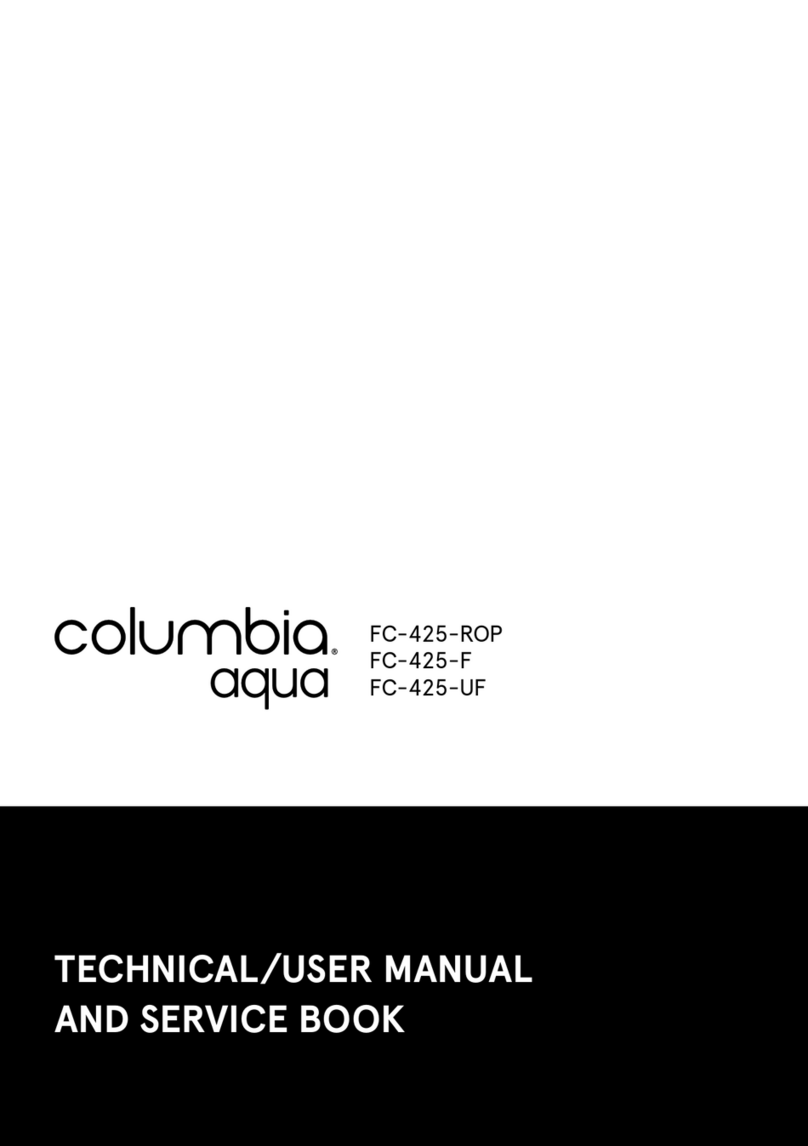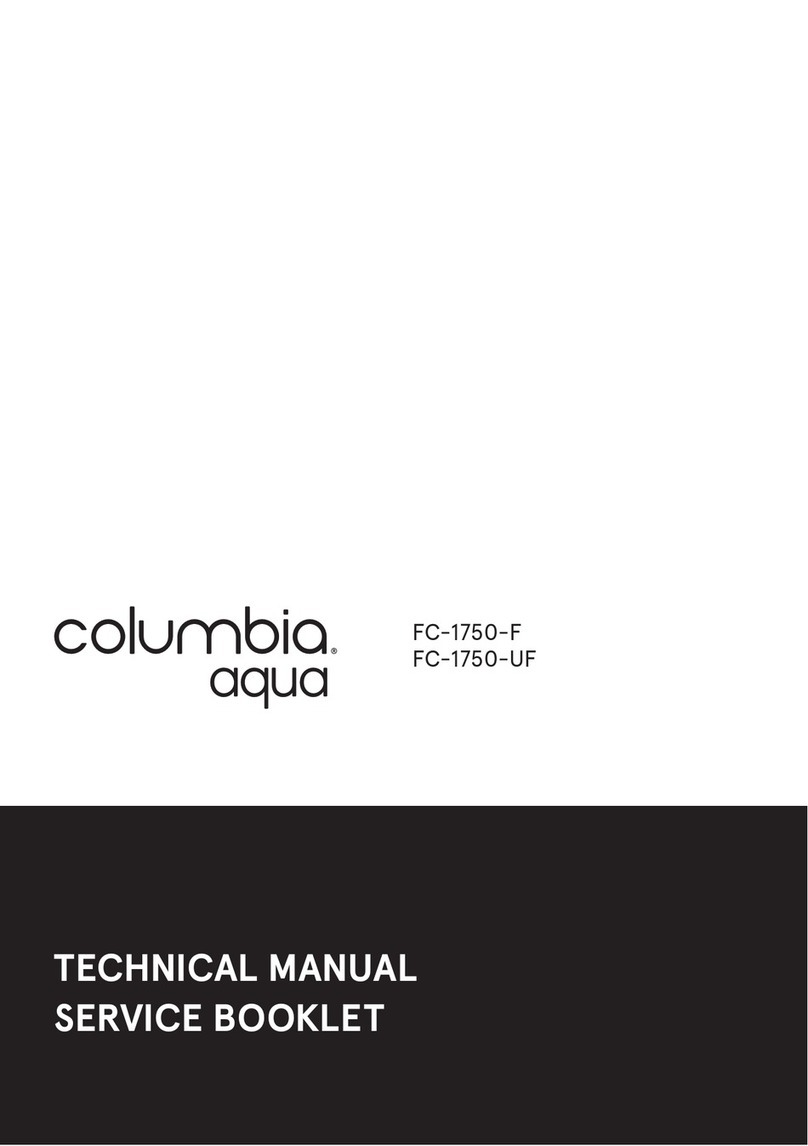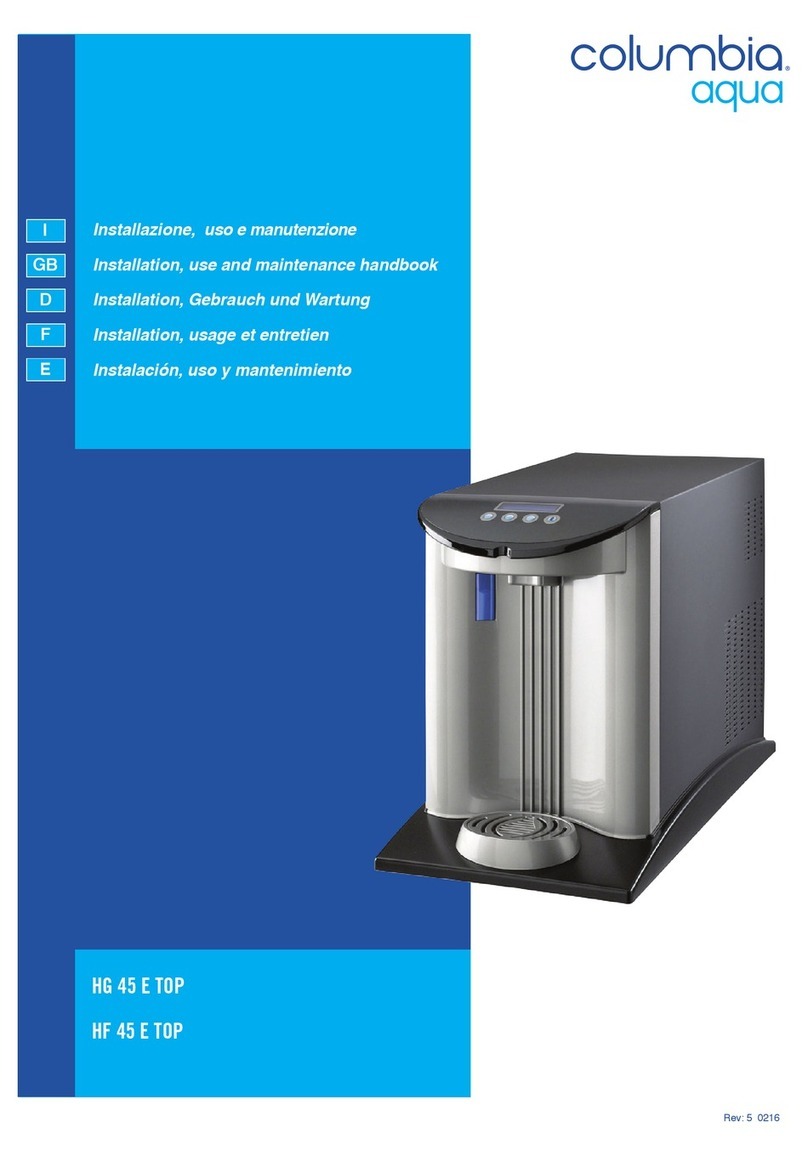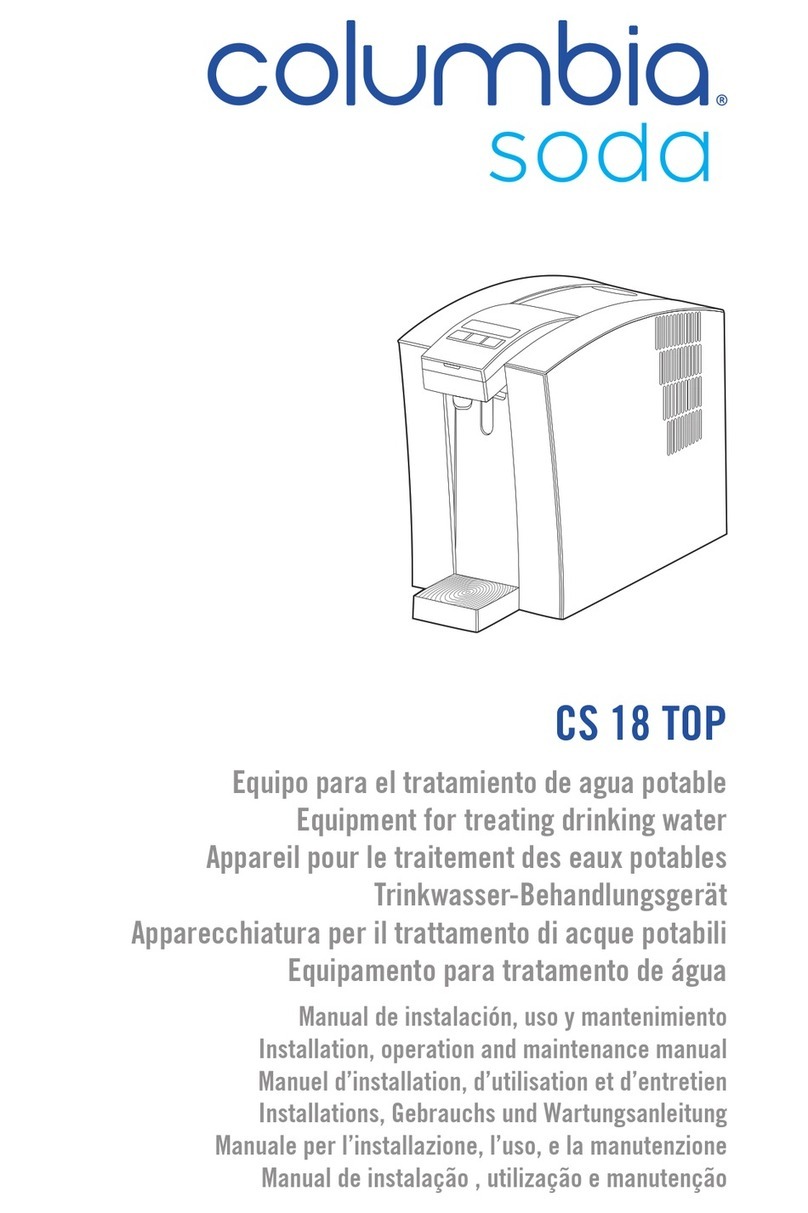
Data sheet
• Under no circumstances will the equipment be insta-
lled outdoors.
ATTENTION: The equipment must not be
connected to the electrical current directly, it
must be left to rest for 2 hours once it has been placed
in the desired installation position. This is very
important to ensure correct system operation,
otherwise the compressor could be damaged. The
manufacturer will not be responsible for damages
caused to the equipment in this case.
4.3. Equipment use warnings
• When you are going to be away for more than a
week, close the water inlet tap to the equipment,
empty it and disconnect it from the power supply.
When you return, connect the power supply to it, open
the inlet valve and empty the storage tank twice before
consuming water.
Attention: After a prolonged period (more than
a month) in which the equipment has not been
working or producing water, contact your
distributor in order to carry out adequate sanitation
and maintenance.
Attention: Special attention should be paid to
the cleaning and hygiene of the front
dispensers, on a regular basis and especially
when carrying out periodic maintenance and
sanitization. To do this, use the single-use sanitizing
spray and absorbent paper (See the Sanitizing
chapter).
Attention: The water provided by the osmosis
equipment is LOW MINERALIZATION. The
mineral salts that the human body needs are provided
mainly by food, and to a lesser extent by drinking
water.
5. EQUIPMENT OPERATION
5.1 How to draw water from your dispenser
See chapter 3 of the Technical Manual to identify the
dispensers and how to draw water.
5.2 Use of management and control components
See chapter 4 of the Technical Manual to identify and
know how the management and control components
work.
5.3 Basic system operation
In the “Filtration” models, the mains water to be treated
enters the equipment through the turbidity filter and
carbon filter. In this filtration stage, suspended parti-
cles, chlorine, its derivatives and other organic subs-
tances are retained.
In the “Ultrafiltration” models, the water subsequently
passes through the UF membrane where the smallest
particles and even viruses and bacteria will be retained.
In the “Reverse Osmosis” models; the passage of water
into the equipment is controlled by a solenoid valve.
The water, after the filtration stage, is driven towards
the reverse osmosis membrane. Depending on the mo-
del, the equipment may incorporate a pump to increase
the pressure. The pressure of the water on the mem-
brane makes the reverse osmosis process possible.
Subsequently, the water passes through a post-filter
whose purpose is the elimination of possible odors and
flavors, as well as the pH adjustment that the water
could have before being accumulated.
The rejected water or with excess salts and other
dissolved substances is directed towards the drain for
its elimination.
When demanding water by pressing the front dispensers
of the equipment, the water accumulated in the cold,
hot and reserve water tanks (depending on the model
flows towards the outlet nozzles.
Attention: There are slight variations in
operation, depending on the model. Read the
corresponding section of the Technical Manual.
6. INSTALLATION
The installation of your Columbia Dispenser must be
carried out by personnel qualified enough for it. Check
with the dealer if in doubt.
Attention: Since the device to be installed
improves the quality of the water that is going
to be consumed, all the tools that are going to
be used for assembly and installation must be clean
and in no case may they be contaminated or
impregnated with grease. oils or oxides. Use exclusive
use tools for tube cutting, membrane manipulation,
etc.
Attention: The work must be carried out with an
attitude and adequate hygienic conditions,
taking extreme precautions in everything related to
materials and components that are going to be in con-
tact with the water to be treated or consumed.
Attention: Avoid the risks of external contamina-
tion of the equipment due to improper handling,
using gloves, hand sanitizing gel or washing your hands
as many times as necessary throughout the installa-
tion, start-up and maintenance of the equipment.
Install the drain collar, only in the RO version (image 2)
and the inlet adapter (image 3) and connect them to the
respective connectors of the IN (input) and OUT / DRA-
IN (drain) equipment, only in the RO version (image 4).
The drain pipe can be directed up a maximum of 2.5
meters vertically and another 5 meters horizontally.
Some models include a connection for emptying the
drip tray (see the Technical Manual), in this case this
tube must be directed to a drain that is at a lower hei-
ght than the tray since it will be emptied by the weight
of water .

































